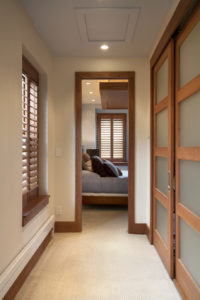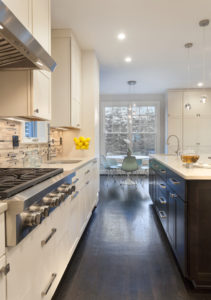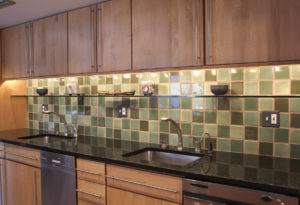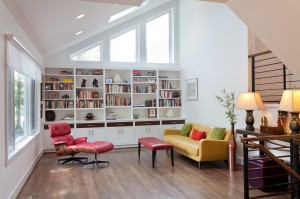Principles of Design
Principles of Design
How do Line, Shape, Direction, Space, Texture, Color and Space Hue, and Value affect your design? Akin to baking a cake, what good are the ingredients without a recipe? The elements are the ingredients, the principles are the directions. The Principles of Design include Balance, Emphasis, Movement, Pattern, Repetition, Proportion, Rhythm, Variety and Unity.
Here at Grossmueller’s Design we can help you achieve your home renovation and design needs, even when our stylistic preferences vary. Knowing how the Elements of Design work, allow us to utilize the Principles in different ways to create the perfect combination for each project.
- Balance – The visual or physical weight of an object, color, or texture within a room. Think stability. Balance comes in three forms
- Symmetrical – elements are even and or similar on both sides. Three red tiles on the left, three red tiles on the right
- Asymmetrical – the opposite of symmetrical. Three red tiles on the left, three blue tiles on the right.
- Radial – the design derives from the center. Imagine a drawing of the sun, and the rays emitting from the sides.
- Emphasis – Artists and Designers want the viewer to focus your attention on a particular area of the room using size, color, texture or shapes. Accent walls, large paintings or center pieces are examples of emphasis that reinforce a design pattern. In short making something stand out – in contrast to the rest of the design
- Movement – Where do you eyes lead you within a room? Left to Right, Up and down or to the center of the room? Lines, shapes, colors and soft edges take your eyes to an emphasized area. In Van Gogh’s “Starry Night”, the brush strokes take you from left to right. Take a look in this kitchen – vertical lines direct your eyes from the entry way through the kitchen ending with a large window.

- Pattern/Repetition – The organization of shapes, colors, lines etc. A classic example of pattern is a tiled backsplash. Think stripes, motifs, floral, animal prints…these all have a pattern. Repeated use of a pattern or elements can bring life to an area, no matter room size.

- Proportion – A part or share considered in comparative relation to the whole. In design you can play with proportion in the furniture you use compared to the size of the room, the addition you construct compared to the size of the house. When items are in proportion, they are typically un-noticeable; however, when things are out of proportion, they typically strike you as “off”. You can use vertical lines to add height or horizontal lines to add space and visually change the proportions of a space
- Rhythm – Repeated use of a pattern within a design. The Brain can easily recognize a pattern. Rhythm is used to establish consistency using lines, shapes or colors to accentuate and emphasize a particular area or structure. Rhythm moves the eye around the room and is the underlying key to variety in a space. Uses of Transition, Gradation or Repetition?
- Variety – The use of several elements within a design to hold the viewers attention – a logical relationship or progression of design. Variety is used to create unity within a design restoring balance. Can you point out the different elements? (Picture?)

- Unity – The way items relate to each other, it’s the sum of all parts. Unity is the summary of all of the principles and elements within a design. Tiled backsplash, vertical and horizontal lines, circles, squares, rectangles, SPACE, recessed lighting – This project has it all.

Each of the above elements work together to achieve visually aesthetic designs to homes, offices or restaurants in order to fulfill client needs and wants. Regardless of the design style – contemporary, modern, traditional or Bohemian –each use the elements and principles to achieve their own stylistic niche. What design style is right for you?